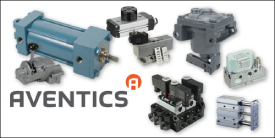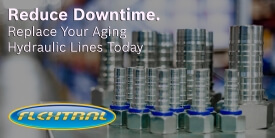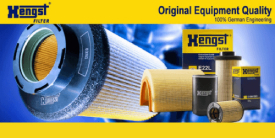***Disclaimer: The following summary contains information gathered from various sources such as product descriptions, technical specifications and catalogs. While efforts have been made to provide accurate details, inaccuracies may occur. It is advised to verify all information by contacting Bosch Rexroth directly.***
The Bosch Rexroth DB10-3-5X/50 (R900503083) is a sophisticated pressure relief valve that serves as a critical component for controlling and limiting operating pressures in hydraulic systems. This pilot-operated relief valve is distinguished by its main valve with a spool insert and a pilot control valve featuring an adjustable pressure element. The design of the DB10-3-5X/50 allows it to maintain consistent system pressures by channeling hydraulic fluid through an intricate network of control lines and nozzles, which facilitate the pressure drop necessary to actuate the main spool. When the pressure in channel P surpasses the preset value, it triggers the ball within the pilot control valve to counteract the spring force, enabling fluid to flow from channel P to T, thus preserving the desired operating pressure.
The versatility of this model is further enhanced by its ability to be unloaded or switched to an alternative pressure setting via port X, providing adaptability for various operational requirements. For ease of installation, this valve supports subplate mounting and adheres to ISO porting patterns including NG6, NG10, and NG25. It also offers flexibility with threaded connections as a screw-in cartridge valve. The DB10-3-5X/50 comes with different adjustment types for setting the pressure: a rotary knob, sleeve with hexagon and protective cap, lockable rotary knob with scale, or rotary knob with scale—each designed for precise control.
This model boasts corrosion protection and is engineered for maximum operating pressures up to 350 bar and maximum flow rates up to 600 l/min. The size and component series mark further delineate its specifications ensuring compatibility and performance in demanding applications. With its robust construction and precise engineering, the Bosch Rexroth DB10-3-5X/50 (R900503083) stands as a reliable solution for hydraulic pressure regulation across a broad spectrum of system configurations.
$1,039.00 USD
More are expected on July 14, 2026
| Qty | Price | Savings |
|---|---|---|
| 5-24 | $1,013.02 USD | $25.98 USD |
| 25+ | $987.05 USD | $51.95 USD |
Status: This product is temporarily out of stock.
Qty: Delivered as early as July 14, 2026 when ordered in
This product is eligible for factory repair.
For subplate mounting Porting pattern according to ISO 6264-06-09 (NG10), ISO 6264-08-13 (NG25) and ISO 6264-10-17 (NG32) For threaded connection As screw-in cartridge valve (cartridge) 4 adjustment types for pressure adjustment, optionally
• Rotary knob
• Sleeve with hexagon and protective cap
• Lockable rotary knob with scale
• Rotary knob with scale 5 pressure ratings Corrosion-protected design
Pressure valve type DB is a pilot-operated pressure relief valve. It is used for limiting the operating pressure.
The pressure relief valves (DB) basically consist of the main valve (1) with main spool insert (3) and pilot control valve (2) with pressure adjustment element.
The pressure applied to channel P acts on the main spool (3). At the same time, pressure is applied to the spring-loaded side of the main spool (3) and to the ball (8) in the pilot control valve (2) via the control lines (6) and (7) which are equipped with nozzles (4) and (5). If the pressure in channel P exceeds the value set at the spring (9), the ball (8) opens against the spring (9). The corresponding signal comes internally, via the control lines (10) and (6) from channel P. The hydraulic fluid on the spring-loaded side of main spool (3) now flows via the control line (7), nozzle bore (11) and ball (8) into the spring chamber (12). From here, it is fed into the tank, either internally for type DB …– via control line (13), or externally for type DB…Y via control line (14). Nozzles (4) and (5) cause a pressure drop to occur at the main spool (3), hence the connection from channel P to channel T opens. Now, the hydraulic fluid flows from channel P to channel T maintaining the set operating pressure.
The pressure relief valve can be unloaded or switched to another pressure (second pressure rating) via port X (15).
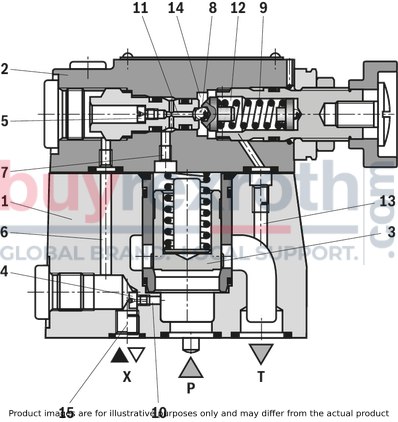
|
01 |
02 |
03 |
04 |
05 |
06 |
07 |
08 |
09 |
10 |
11 |
12 |
13 |
14 |
15 |
16 |
17 |
18 |
19 |
20 |
21 |
22 |
|
|
DB |
5X |
/ |
* |
|
01 |
Pressure relief valve |
DB |
|
02 |
Without directional valve |
no code |
|
03 |
Pilot-operated valve (complete) |
no code |
|
Pilot control valve without main spool insert (do not enter any size) |
C |
|
|
Pilot control valve with main spool insert (enter size 10 or 30) |
C |
|
|
Pilot control valve without main spool insert for subplate mounting (do not enter any size) |
T 1) |
|
|
04 |
Size 10 |
|
|
Subplate mounting "no code" |
10 |
|
|
Threaded connection "G" |
10 (G1/2) |
|
|
Size 16 |
||
|
Threaded connection "G" |
15 (G3/4) |
|
|
Size 25 |
||
|
Subplate mounting "no code" |
20 |
|
|
Threaded connection "G" |
20 (G1) |
|
|
Threaded connection "G" |
25 (G1 1/4) |
|
|
Size 32 |
||
|
Subplate mounting "no code" |
30 |
|
|
Threaded connection "G" |
30 (G1 1/2) |
|
|
05 |
Without directional valve |
no code |
|
Type of connection |
||
|
06 |
Subplate mounting or cartridge valve |
no code |
|
For threaded connection |
G |
|
|
Adjustment type for pressure adjustment |
||
|
07 |
Rotary knob (not for version "C" and "T") |
1 |
|
Sleeve with hexagon and protective cap |
2 |
|
|
Lockable rotary knob with scale |
3 2) |
|
|
Rotary knob with scale |
7 |
|
|
08 |
Main spool Ø24 mm (all sizes) |
– |
|
Main spool Ø28 mm (only for NG32) |
N |
|
|
09 |
Component series 50 … 59 (50 … 59: unchanged installation and connection dimensions) |
5X |
|
10 |
Set pressure up to 50 bar |
50 |
|
Set pressure up to 100 bar |
100 |
|
|
Set pressure up to 200 bar |
200 |
|
|
Set pressure up to 315 bar |
315 |
|
|
Set pressure up to 350 bar |
350 |
|
|
Pilot oil flow |
||
|
11 |
External pilot oil supply, internal pilot oil return |
X 3) |
|
Internal pilot oil supply, external pilot oil return |
Y |
|
|
Pilot oil supply and pilot oil return external |
XY 3) |
|
|
12 |
Standard version |
no code |
|
Valve for minimum cracking pressure (not for versions "without main spool insert" and not suitable for mutual relief) |
U 4) |
|
|
13 |
Without switching shock damping |
no code |
|
14 |
Without directional valve |
no code |
|
15 |
Without directional valve |
no code |
|
16 |
Without manual override |
no code |
|
Electrical connection |
||
|
17 |
Without directional valve |
no code |
|
18 |
Without directional valve |
no code |
|
Corrosion resistance |
||
|
19 |
None |
no code |
|
Improved corrosion protection (240 h salt spray test according to EN ISO 9227) |
J3 5) |
|
|
Seal material |
||
|
20 |
NBR seals |
no code |
|
FKM seals |
V |
|
|
Observe compatibility of seals with hydraulic fluid used. (Other seals upon request) |
||
|
Equipment Directive |
||
|
21 |
Without type-examination procedure |
no code |
|
Type-examination tested safety valve according to Pressure Equipment Directive 2014/68/EU |
E |
|
|
22 |
Further details in the plain text |
* |
| 1) | DBT corresponds to DBC, however with closed central bore |
| 2) | H-Key with material no. R900008158 is included in the scope of delivery. |
| 3) | Not with version "DBC" |
| 4) | Only possible up to pressure rating 315 bar |
| 5) | Only version "2", however without protective cap |
Type-examination tested safety valves type DB…E
(Component series 5X according to Pressure Equipment Directive 2014/68/EU)
|
NG |
Type designation |
Component marking |
Maximum flow qVmax in l/min with pilot oil return |
Set response overpressurep in bar |
|
|
external "Y" |
internal "–" |
||||
|
10 |

|
TÜV.SV.▢ – 851.12.F.G.p |
170 230 230 230 |
130 200 200 200 |
30 ... 60 61 ... 110 111 ... 210 211 ... 350 |
|
25 |

|
TÜV.SV.▢ – 852.22.F.G.p |
250 270 420 450 |
180 210 320 400 |
30 ... 60 61 ... 110 111 ... 210 211 ... 350 |
|
32 |

|
TÜV.SV.▢ – 853.32.F.G.p |
600 600 650 700 |
225 340 540 580 |
30 ... 60 61 ... 110 111 ... 210 211 ... 350 |
|
1 |
For subplate mounting |
no code |
|
For threaded connection |
G |
|
|
Adjustment type for pressure adjustment |
||
|
2 |
Hand wheel (pressure adjustment sealed, unloading or setting of a lower response pressure possible!) |
1 |
|
With sealed protective cap (no adjustment/unloading possible) |
2 |
|
|
Pressure |
||
|
3 |
To be entered by the customer, e.g. pressure adjustment ≥ 30 bar and possible in 5 bar steps. |
e.g. 150 |
|
Pilot oil flow |
||
|
4 |
Pilot oil supply internal, pilot oil return internal |
no code |
|
Pilot oil supply internal, pilot oil return external (Recommendation) |
Y 1) |
|
|
5 |
NBR seals |
no code |
|
FKM seals |
V |
|
|
▢ |
Value entered at the factory |
|
| 1) | Pilot oil supply external "X" not possible |
general
|
Size |
10 | 16 | 25 | 32 | ||||
| DB.. 15 | DB.. 20 | DB.. 25 | ||||||
|
Weight |
Subplate mounting |
DB... |
kg |
2.6 | - | 3.5 | - | 4.4 |
|
DBC... |
kg |
1.2 | ||||||
|
DBC 10 or 30 ... |
kg |
1.5 | ||||||
|
Threaded connection |
DB...G |
kg |
5.3 | 5.2 | 5.1 | 5 | 4.8 | |
|
Installation position |
any | |||||||
|
Ambient temperature range |
NBR seals |
°C |
-30 … +80 | |||||
|
FKM seals |
°C |
-15 … +80 | ||||||
|
Minimum stability of the housing materials |
Housing materials are to be selected so that there is sufficient safety for all imaginable operating conditions (e.g. with regard to pressure resistance, thread stripping strengths and tightening torques). | |||||||
hydraulic
|
Size |
10 | 16 | 25 | 25 | 32 | ||
|
Maximum operating pressure |
Port P |
bar |
350 | ||||
|
Port X |
bar |
350 | |||||
|
Port T |
bar |
315 | |||||
|
Maximum counter pressure |
Port Y (DC solenoid) |
bar |
315 | ||||
|
Minimum set pressure |
flow-dependent, see characteristic curves | ||||||
|
Maximum set pressure |
bar |
50 100 200 315 350 |
|||||
|
Maximum flow |
Subplate mounting |
l/min |
250 | - | 500 | - | 650 |
|
Threaded connection |
l/min |
250 | 500 | 650 | |||
|
Hydraulic fluid |
see table | ||||||
|
Hydraulic fluid temperature range |
NBR seals |
°C |
-30 … +80 | ||||
|
FKM seals |
°C |
-15 … +80 | |||||
|
Viscosity range |
mm²/s |
10 … 800 | |||||
|
Maximum admissible degree of contamination of the hydraulic fluid 1) |
Class 20/18/15 according to ISO 4406 (c) | ||||||
| 1) | The cleanliness classes specified for the components must be adhered to in hydraulic systems. Effective filtration prevents faults and simultaneously increases the life cycle of the components. For the selection of the filters, see www.boschrexroth.com/filter. |
Note:
Tank preloading adds to the minimum set pressure (ports T and Y)
|
Hydraulic fluid |
Classification |
Suitable sealing materials |
Standards |
Data sheet |
|
|
Mineral oils |
HL, HLP |
NBR, FKM |
DIN 51524 |
90220 |
|
|
Bio-degradable 1) |
Insoluble in water |
HETG |
FKM |
ISO 15380 |
90221 |
|
HEES |
FKM |
||||
|
Soluble in water |
HEPG |
FKM |
ISO 15380 |
||
|
Flame-resistant |
Water-free |
HFDU (glycol base) |
FKM |
ISO 12922 |
90222 |
|
HFDU (ester base) 1) |
FKM |
||||
|
Containing water |
HFC (Fuchs Hydrotherm 46M, Petrofer Ultra Safe 620) |
NBR |
ISO 12922 |
90223 |
|
|
Important information on hydraulic fluids: For further information and data on the use of other hydraulic fluids, please refer to the data sheets above or contact us. There may be limitations regarding the technical valve data (temperature, pressure range, life cycle, maintenance intervals, etc.). The ignition temperature of the hydraulic fluid used must be 50 K higher than the maximum solenoid surface temperature. Flame-resistant – containing water: Maximum operating pressure 210 bar Life cycle as compared to operation with mineral oil HL, HLP 30 … 100 % Maximum hydraulic fluid temperature 60 °C Bio-degradable and flame-resistant: If this hydraulic fluid is used, small amounts of dissolved zinc may get into the hydraulic system. |
|||||
| 1) | Not recommended for corrosion-protected version “J3” |
Deviating technical data: Type-examination tested safety valves type DB…E
(Component series 5X according to Pressure Equipment Directive 2014/68/EU)
hydraulic
|
Version |
Pilot oil flow "no code" | Pilot oil flow "Y" | ||
|
Maximum counter pressure |
Port Y |
bar |
- | 0 |
|
Port T |
See characteristic curves and explanatory notes for maximum counter pressure | PT < 15 | ||
|
Maximum flow |
See ordering code, safety instructions and characteristic curves "Type-examination tested safety valve" | |||
|
Hydraulic fluid |
Mineral oil (HL, HLP) according to DIN 51524 and DIN 51524-1 | |||
|
Hydraulic fluid temperature range |
-10 … +60 °C | |||
|
Viscosity range |
mm²/s |
12 … 230 | ||
For applications outside these parameters, please consult us!
(measured with HLP46, ϑOil = 40 ±5 °C)
Standard version
Minimum set pressure and circulation pressure dependent on the flow 1)

| 1) | The characteristic curves apply to an output pressure pT =0 bar in the entire flow range. |
Version “U”
Minimum set pressure and circulation pressure dependent on the flow 1)

Inlet pressure dependent on the flow

Notice:
The characteristic curves were measured with external, depressurized pilot oil return.
Due to the internal pilot oil return, the inlet pressure increases by the output pressure present in port T.
Pilot flow

Type-examination tested safety valves
(Component series 5X, according to Pressure Equipment Directive 2014/68/EU)
Counter pressure in the discharge line
Basically, the valve should be operated without counter pressure in the discharge line, if possible. With counter pressure in the discharge line, the maximum flow possible is reduced. There is a relation between the maximum counter pressure pT in the discharge line and flow qV, which can be seen from the following characteristic curves. Characteristic curves for intermediate values of the response pressure which are not listed must be determined by means of interpolation.
With a flow approaching zero, the maximum counter pressure pT is in each case 10 % of the response pressure. With increasing flow, the maximum counter pressure pT is reduced.
Interpolation of intermediate values from the diagram
At the pT axis, mark 1/10 of the value of pA. Determine the next lower and the next higher characteristic curve for this point. The point marked at pT divides the section between lower and higher characteristic curve on the pT axis with a certain percentage. At the qVmax axis, divide the section between next lower and next higher characteristic curve in the same percentage as the section at the pT axis. From the zerocrossing on the qVmax axis determined in that way, draw a straight line to the value on the pT axis marked before. Mark the system flow to be secured at the qVmax axis. Read off the maximum counter pressure for this value using the line at the pT axis drawn before.
Determination of the maximum counter pressure
Example 1 (with already existing characteristic curve):
Flow of the system / accumulator to be secured:qVmax = [si]300 l/min[/si][imp]79.3 USgpm[/imp Safety valve set to: pA = [si]80 bar[/si][imp]1150 psi[/imp]. Read off the maximum counter pressure pT of approx. [si]12 bar[/si][imp]175 psi[/imp] from the diagram (see arrows, dashed line " ").
Example 2 (with interpolated characteristic curve):
Flow of the system / accumulator to be secured: qVmax = [si]300 l/min[/si][imp]79.3 USgpm[/imp Safety valve set to: pA = [si]80 bar[/si][imp]1150 psi[/imp] Value to be marked at the axis referred to as pT: 1/10 x [si]80 bar[/si][imp]1150 psi[/imp] = [si]8 bar[/si][imp]115 psi[/imp]. Read off the maximum counter pressure pT of approx. [si]1 bar[/si][imp]15 psi[/imp] from the diagram (see arrows, dashed/dotted line " ").
Size 10
Diagram for determining the maximum counter pressure pT in the discharge line at port T of the valve dependent on the flow qVmax for valves type DB(W)...E with different response pressures pA.Intermediate values may be determined by means of interpolation. Regarding the procedure for interpolation refer to "Interpolation of intermediate values from the diagram".
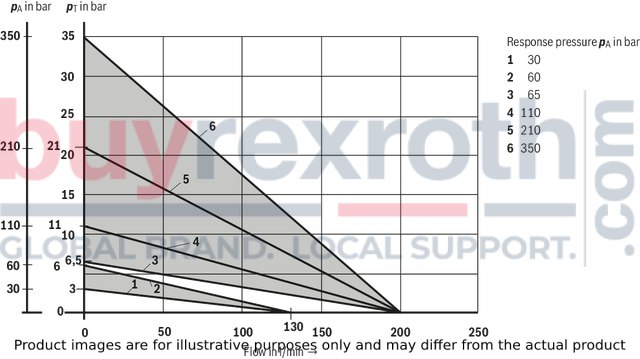
Size 20
Diagram for determining the maximum counter pressure pT in the discharge line at port T of the valve dependent on the flow qVmax for valves type DB(W)...E with different response pressures pA.Intermediate values may be determined by means of interpolation. Regarding the procedure for interpolation refer to "Interpolation of intermediate values from the diagram".

Size 30
Diagram for determining the maximum counter pressure pT in the discharge line at port T of the valve dependent on the flow qVmax for valves type DB(W)...E with different response pressures pA.Intermediate values may be determined by means of interpolation. Regarding the procedure for interpolation refer to "Interpolation of intermediate values from the diagram".

|
pA |
Response pressure in bar |
|
pT |
Maximum counter pressure in the discharge line (port T) in bar (sum of all possible counter pressures; also see AD2000 data sheet - A2) |
|
pT max |
10% x pA (with qV=0 l/min) according to Pressure Equipment Directive 2014/68/EU |
|
qV max |
Maximum flow in l/min |
Type DB…–…
|
Type DB…X…
|
Type DB…Y…
|
Type DB…XY…
|
Threaded connection "G"
Dimensions in mm
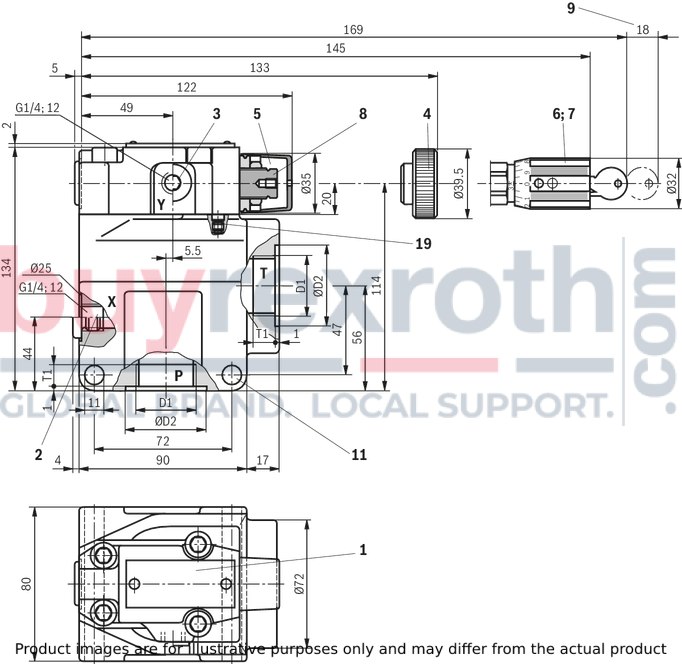
|
1 |
Name plate |
|
2 |
X port for pilot oil supply, external |
|
3 |
Y port for pilot oil return, external |
|
4 |
Adjustment type "1" |
|
5 |
Adjustment type "2" |
|
6 |
Adjustment type "3" |
|
7 |
Adjustment type "7" |
|
8 |
Hexagon SW10 |
|
9 |
Space required to remove the key |
|
11 |
Valve mounting bores |
|
19 |
Omitted with internal pilot oil return |
|
Version |
D1 |
ØD2 |
T1 |
|
mm |
mm |
||
| "DB 10 G" | G1/2 | 34 | 14 |
| "DB 15 G" | G3/4 | 42 | 16 |
| "DB 20 G" | G1 | 47 | 18 |
| "DB 25 G" | G1 1/4 | 58 | 20 |
| "DB 30 G" | G1 1/2 | 65 | 22 |
Subplate mounting "no code"
Dimensions in mm
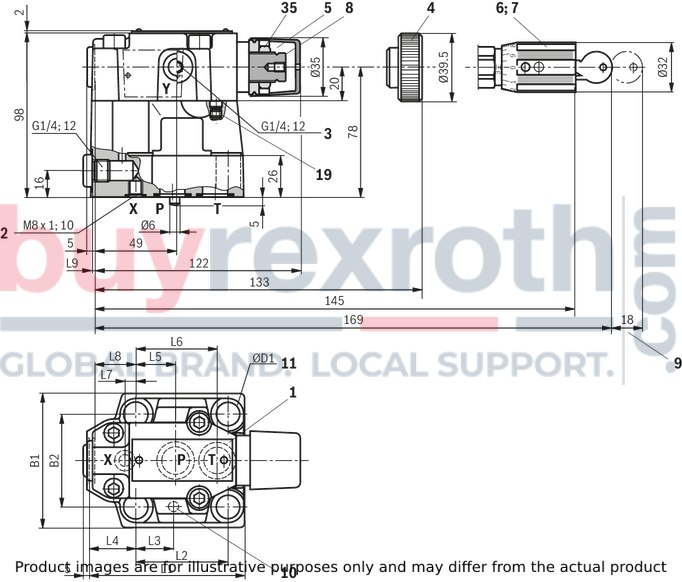
|
1 |
Name plate |
|
2 |
X port for pilot oil supply, external |
|
3 |
Y port for pilot oil return, external |
|
4 |
Adjustment type "1" |
|
5 |
Adjustment type "2" |
|
6 |
Adjustment type "3" |
|
7 |
Adjustment type "7" |
|
8 |
Hexagon SW10 |
|
9 |
Space required to remove the key |
|
10 |
Locking pin |
|
11 |
Valve mounting bores |
|
19 |
Omitted with internal pilot oil return |
|
35 |
Lock nut SW17, tightening torque MA = 10+5 Nm |
|
Version |
L1 |
L2 |
L3 |
L4 |
L5 |
L6 |
L7 |
L8 |
L9 |
B1 |
B2 |
ØD1 |
|
mm |
mm |
mm |
mm |
mm |
mm |
mm |
mm |
mm |
mm |
mm |
mm |
|
| "DB 10" | 91 | 53.8 | 22.1 | 27.5 | 22.1 | 47.5 | 0 | 25.5 | 2 | 78 | 53.8 | 14 |
| "DB 20" | 116 | 66.7 | 33.4 | 33.3 | 11.1 | 55.6 | 23.8 | 22.8 | 10.5 | 100 | 70 | 18 |
| "DB 30" | 147.5 | 88.9 | 44.5 | 41 | 12.7 | 76.2 | 31.8 | 20 | 21 | 115 | 82.6 | 20 |
Pilot control valve with ("DBC 10 or 30") or without main spool insert ("DBC, DBT")
Dimensions in mm

Installation bore
Dimensions in mm
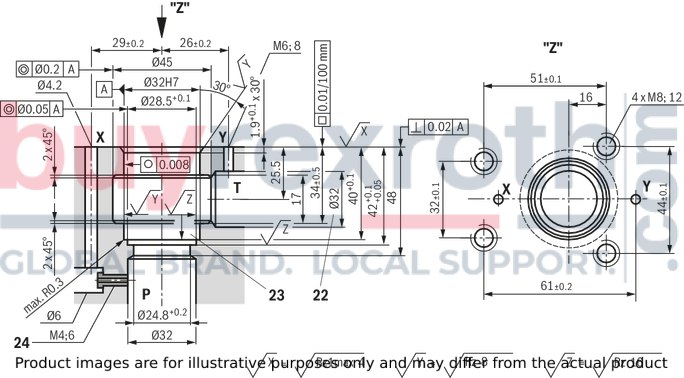
|
1 |
Name plate |
|
3 |
Y port for pilot oil return, external |
|
5 |
Adjustment type "2" |
|
6 |
Adjustment type "3" |
|
7 |
Adjustment type "7" |
|
8 |
Hexagon SW10 |
|
9 |
Space required to remove the key |
|
11 |
Valve mounting bores |
|
20 |
Seal ring |
|
21 |
Main spool insert |
|
22 |
Bore Ø32 mm can cut Ø45 mm at any point. However, it must be observed that the connection bore X and the mounting bore are not damaged! |
|
23 |
Support ring and seal ring are to be inserted into this bore before assembly of the main spool. |
|
24 |
Nozzle (separate order; recommended nozzle Ø1.0 mm) |
|
25 |
Seal ring |
|
26 |
Seal ring |
|
27 |
Seal ring |
|
28 |
Support ring |
|
29 |
Support ring |
|
35 |
Lock nut SW17, tightening torque MA = 10+5 Nm |
Valve mounting screws (separate order)
For reasons of stability, exclusively the following valve mounting screws may be used:
Version "DB 10"4 x ISO 4762 - M12 x 50 - 10.9-flZn/nc/480h/C
with friction coefficient μtotal = 0.09 … 0.14
tightening torque MA = 75 Nm ±10%
material no. R913015611 Version "DB 20"
4 x ISO 4762 - M16 x 50 - 10.9-flZn/nc/480h/C
with friction coefficient μtotal = 0.09 … 0.14
tightening torque MA = 185 Nm ±10%
material no. R913015664 Version "DB 30"
4 x DIN 912 - M18 x 50 - 10.9-flZn/nc/480h/C
with friction coefficient μtotal = 0.09 … 0.14
tightening torque MA = 248 Nm ±10%
material no. R913015903 Version "DBC", "DBC 10", "DBC 30" and "DBT"
4 x ISO 4762 - M8 x 40 - 10.9-flZn/nc/480h/C
with friction coefficient μtotal = 0.09 … 0.14
tightening torque MA = 31 Nm ±10%
material no. R913015798
Notice:
The tightening torques stated are guidelines when using screws with the specified friction coefficients and when using a manual torque wrench (tolerance ±10%).

|
|
Required surface quality of the valve contact surface |
Safety instructions: Type-examination tested safety valves type DB…E
(Component series 5X according to Pressure Equipment Directive 2014/68/EU)
Before ordering a type-examination tested safety valve, it must be observed that for the desired response overpressure p, the maximum admissible flow qV max of the safety valve must be larger than the maximum possible flow of the system. According to Pressure Equipment Directive 2014/68/EU , the increase of the system pressure by the flow must not be higher than 10 % of the set response pressure (see component marking). Discharge lines (ports T and Y) of safety valves must end in a risk-free manner. The accumulation of fluids in the discharge lines must not be possible (AD 2000 data sheet A 2). If a lead seal at the safety valve is removed, the approval according to the PED! Basically, the requirements of the Pressure Equipment Directive 2014/68/EU and of data sheet AD 2000 A 2 have to be observed.
It is imperative to observe the application notes!
In the plant, the response pressure specified in the component marking is set at a flow of 2 l/min.
The maximum admissible flow stated in the component marking (= numerical value instead of the character "G" in the component marking, see ordering code, type-examination tested safety valves) must not be exceeded.
It applies to:
Pilot oil return “external” (= Y in the ordering key) without counter pressure in the discharge line Y, admissible counter pressure in the discharge line (port T) < 15 bar Pilot oil return “internal” (= no code in the ordering key). The maximum admissible flow is only admissible without counter pressure in the discharge line (port T).With internal pilot oil return, the system pressure increases by the counter pressure in the discharge line (port T) with increasing flow (observe AD2000 - data sheet A2 - item 6.3!).
To ensure that this increase in system pressure caused by the flow does not exceed the value of 10% of the set response pressure, the admissible flow has to be reduced dependent on the counter pressure in the discharge line (port T) (see diagrams (Safety instructions, Type-examination tested safety valves)).
It is imperative to observe the application notes!
In the plant, the response pressure specified in the component marking is set with a flow of 11 l/min. The maximum admissible flow stated in the component marking (= numerical value instead of the character "G" in the component marking, see ordering code, type-examination tested safety valves) must not be exceeded.It applies to: Pilot oil return external ("Y") without counter pressure in the discharge line Y; admissible counter pressure in the discharge line (port T) < 15 bar Pilot oil return internal ("no code"). The maximum flow is only admissible without counter pressure in the discharge line (port T).
With internal pilot oil return, the system pressure increases by the counter pressure in the discharge line (port T) due to the increasing flow (observe AD2000 - data sheet; A2, item 6.3!)
To ensure that this increase in system pressure caused by the flow does not exceed 10% of the set response pressure, the admissible flow has to be reduced dependent on the counter pressure in the discharge line (port T) (see diagrams (Safety instructions, Type-examination tested safety valves)).
Notice:
Possible unloading via the directional valve must not be applied for safety-relevant functions! If unloading is required for safety-relevant functions, an additional unloading valve must be installed.
General information
The unloading function (directional valve function with version "DBW") must not be used for safety functions! With version "B", the lowest adjustable pressure (circulation pressure) is set in case of power failure or cable break. With version "A", the pressure limiting function is set in case of power failure or cable break. Hydraulic counter pressures in port T with internal pilot oil return and/or port Y with external pilot oil return add 1:1 to the response pressure of the valve set at the pilot control.Example: Pressure adjustment of the valve by spring preload (item 9 "Product description") in the pilot control valve/adjustment type pspring = 200 bar Hydraulic counter pressure in port T with internal pilot oil return phydraulic = 50 bar => Response pressure = pspring + phydraulic = 250 bar
Related Products
R901454054
$115.00 USD
R900956113
$1,668.00 USD
R900967207
$2,984.00 USD
R978017849
$366.00 USD
R901223899
$512.00 USD

